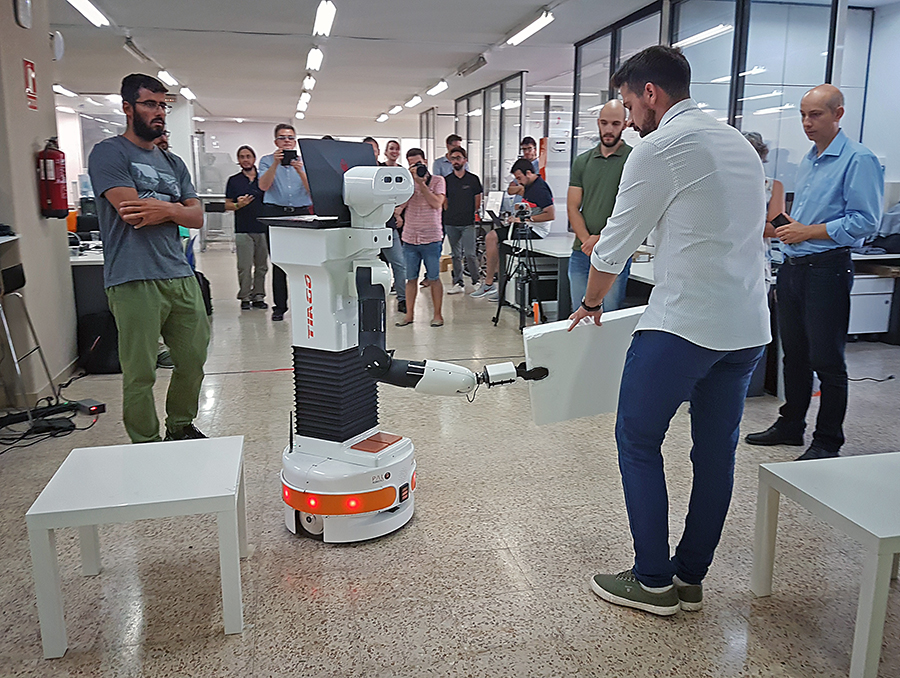Robots that lend a “hand” carrying objects are a breakthrough for human-machine cooperation

Physical interaction between robots and humans is advancing to a new level, as researchers report.
New progress was reported by KTH researchers working within the framework of the Horizon 2020 European research project, Co4Robots . The project has developed functionality that enables real-time robots to move in a dynamic situation while collaborating with other robots as well as people.
“We are definitely, if not the first, then one of the first in the world who have succeeded in this task,” says Professor Dimos Dimarogonas, coordinator of the project at KTH’s Department of Automatic Control .
“What I find extra exciting is that the demonstrations have also been repeated,” he says.
The new functionality the project has developed has since been assigned to the TIAGo robot from PAL Robotics in Spain. TIAGo has gained a sense of observation that it can use to navigate in a changing landscape, such as in an office. As the robot steers itself around a workplace, it can identify things that must be moved. When a human co-worker wants the robot to help them pick up an object, the worker gives the robot a hand signal. Another signal tells the robot to release the object so it can be set down.
“This is a combination of robot vision, navigation and planning, and everything happens in real time, which is unique,” Dimarogonas says. “At KTH we have worked with the planning part, and a key factor here is that cooperation with people or other robots occurs when the robots move. Another important parameter is that robots can handle the uncertainty factor embedded in the environment and work tasks.”
It’s more difficult to do than it sounds. Human-robot collaboration in a changing environment presents a number of challenges for robots which have occupied the international research team intensively, such as picking up and handling different types of objects in different situations, and being able to perceive the environment and communicate with it.
He says that robots must be robust enough to handle all types of environmental uncertainties, as well as measurement errors from the robot's sensors, which read the environment.”
Dimarogonas says that the functionality developed in this project is not platform-specific, so it can be transferred to other robots during the next phase when tests continue with the German manufacturer, Bosch.
"The robots will be in a larger dynamic office environment, and collaborate with more robots and people. Or agents as we call them. They will get more advanced tasks, and with different types of agents.”
Other use cases for the technology will eventually include health care facilities, Dimarogonas says.
"Elder care and various tasks in hospitals are one of the goals for future robots,” he says, adding that for now the work is focused toward enabling robot interaction in office/work environments.
Watch films of the demonstrations
Peter Ardell/David Callahan



